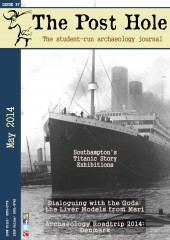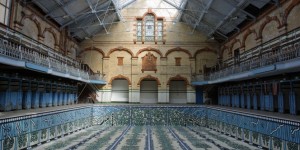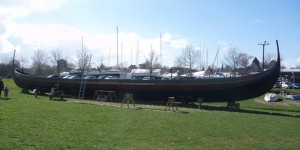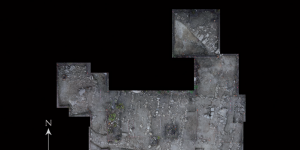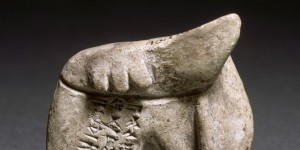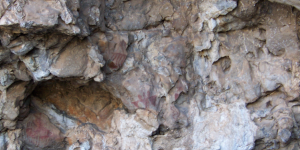Introduction
When the Titanic sank during its maiden voyage in April 1912, the tragedy, in which more than 1500 passengers and crew died, gripped the newspaper headlines all around the world. The disaster stands out as a momentous event from the early 20th century, and it has been baptized as “our century’s first collective nightmare” (Heyer 1995, ix). The actual and symbolic importance of the Titanic’s disaster has haunted subsequent generations up to today. Its tragedy has been commemorated worldwide, inspiring a wealth of creative responses ranging from novels, poems, paintings, films and memorials, as well as becoming an object of scientific enquiry (Bergfelder 2004).
The sinking of the Titanic has had special meaning and memories in two cities of the United Kingdom: Belfast, where the ship was built, and Southampton, from where it set sail and from where the majority of its crew came. In 2012, both of these two cities established museums to commemorate the 100th anniversary of its sinking. Whereas the Belfast museum reveals the birth of Titanic in its docks, the objective of Sea City Museum is to tell visitors about Southampton’s perspective of the Titanic story, and the story of the crew. Both of the museums attempt to bring memories and the meaning it had for the local communities into the public collective memory of their visitors. Therefore, investigating how the memory of the Titanic, as it is produced in the exhibited objects and verbal histories affects the visitors of these museums, is an interesting area of research. What impressions, experiences and knowledge do visitors take away from the museum? This is the question addressed in this study. Due to the limited scope of this paper, I will try to answer it by investigating the perception of the ‘Southampton’s Titanic Story’, which was visited by about 137 thousand visitors during its first year of existence.
1. Museums - where memory meets history
According to Pierre Nora, we create lieux de mémoire, the “embodiments of a commemorative conscious that survives in a history” (Nora 1996, 6), because the memory is no longer part of our everyday life. As memory, contrary to history, is in constant evolution and subject to the dialectic of remembering and/or forgetting, the main objective of the lieux de mémoire is the intention of remembering (Nora, 1989). Nora argued that memory and history should be understood as opposites, as memory is alive, absolute and in permanent evolution that is vulnerable to manipulation, whereas history is a representation of the past, a secular production that claims universal authority. However, understanding museums as potential sites of memory enables us to see how history can have a flexible relationship to the collective memory that it frames in the present (Rivera-Orraca 2009, 35).
A museum is a cultural institution where individual expectations and institutional, academic intentions and objectives interact. It is a place where a range of personal memories are produced, and where collective memories are shared among the visitors (Crane 1997, 46). In collecting objects and putting them on exhibition, museums define both what history is, and what should be remembered and “incorporated into the extra-institutional memory of the museum visitors” (Crane 2000, 2). Moreover, contemporary museums are not only the permanent memory store. Curators and museum organizers display and interpret the material evidence to construct and transmit specific messages. ‘One the other hand, visitors are not passive recipients of the museums’ displays’ (Cubitt, 2007; Henning, 2006; Prown, 1993). When they visit museums, they have both their pre-existing knowledge and life experience which they bring with them to the museum. In Crane’s term, the visitors have the “distortion of expectation” (Crane 1997). When engaging with the exhibited material and non-material objects, they add new content to their existing knowledge and understanding. They construct their own perception and meaning, transforming the history transmitted by museums into their own subjective understanding of the represented past. What is most important, their construction might not necessarily be the same as the objective of the curators or the perception of historians (Watson 2010, 205).
2.|Methodology and data
In order to answer our research questions, we decided to conduct semi-structured interviews with the museum’s visitors. We asked the following open-ended questions that were standard across all the participants:
-
Why did you decide to come to this museum and see this exhibition?
-
Has this exhibition met your expectations? Did you enjoy it?
-
What was the highlight of this exhibition for you?
-
Is there anything in particular that you will remember after your visit?
Depending on the responses, further open-ended questions were asked to elaborate on the emerged topics. Interviews were generally undertaken on a one-to-one basis as people left the exhibition. The study took place over three days, the 27th, the 28th and the 30th of December 2013.
In total, we conducted 53 interviews (28 women and 25 men). The majority of our respondents were aged 36-40 and above 60 (Figure 1). Thirty-three of our participants indicated England as their place of origin, among whom 11 were from Southampton. The second group constituted Polish residents of England (9 individuals). Three of the participants were from Australia, whereas eight participants were from other parts of the globe (Table 1).
| Place of origin | Number |
|---|---|
| Table 1. A table showing the places of origin of visitors surveyed. | |
| England (Southampton) | 33 (10) |
| Poland | 9 |
| Australia | 3 |
| Oman | 1 |
| Kirgizstan | 1 |
| China | 1 |
| Japan | 1 |
| Bulgaria | 1 |
| Greece | 1 |
| South Africa | 1 |
| Middle East | 1 |
3. Visitors’ perceptions of the exhibition
There were various reasons and circumstances that made our respondents come to see the Titanic exhibition. For the majority, the exhibition visit was a form of entertainment when enjoying some free time. However, their interest in history and the story of the Titanic was also significant, next to the general interest in the newly opened Sea City Museum.
In the opinion of our visitors, the exhibition holds three main functions, which we have labeled as: informative, carrier/transmitter of emotions, and educational. The majority of our respondents stressed that this is a modern, hands-on exhibition that gathers all the information in one place, revealing some of the usually neglected facts. This especially concerned the technical information about Titanic and its visual representations. The exhibited paintings, artefacts, or the Titanic’s interactive model reconstructed in 1:25 scale, underline the impressive scale of the ship, and influence visitors’ imagination giving them a feeling of being “somehow close to it”. Words such as ‘big’, ‘massive’, ‘huge’, enormous’, ‘an engineering marvel’ were mentioned often when visitors were asked about their afterthoughts. Moreover, it was appreciated that the information was visually presented well, and that visitors were engaged in discovering some interesting information when participating in the activities prepared for them. To quote some of the respondents:
“opening some of the doors and reading some of the information in there was interesting, [...] I did not know how much food and stuff to take on the ship … lots of chicken [...] I had no idea about that, that was interesting, you did not think about that you know, you focus on the disaster ... not on the amount of stuff to govern such a huge ship” (Man, 40, England)
“it was really good, exciting… many things to do, you have videos, artefacts …you can see there you have the steering wheel where you can drive the ship, you can imagine what it is like to be a captain […] I think it is fabulous, the way it is structured is amazing” (Man, 28, Greece)
“it was really good yeah, I like the interactions that you can try out that were on the ship, it is really, really excellent, much better than I had anticipated, because you never know before you come to the museum” (Woman, 55, England (Southampton)
The organization of the exhibition was highly evaluated by the visitors, who indicated its informative and learning aspects as their favourite part of the exhibition. However, another point of reference of our respondents was their personal experience when listening to the recoded testimonies of those who survived the Titanic’s disaster. Their voices, describing every single detail of this tragic event, made a significant impact on the visitors. It is through the survivors’ verbal testimonies that this tragedy became personalized. Their expressed emotions, feelings and memories were passed onto the visitors of the museum who started to identify themselves with the victims of the Titanic’s disaster. They shared the traumatic memories of this event, making them collective memories (Halbwachs 1992). For instance, to quote some of our respondents:
“I just felt as if I was there with them, you know [...] I had this feeling [...] they were on a very safe ship, now they might die, drown any minute... so they need to rush to the lifeboats, get into the boats and ...you know sail away from the sinking ship …so you get that feeling and then it goes, the lights are going down the water and then ... the explosion and then everything is quiet, screams and everything goes ... quiet gave me shivers [laughs] yeah, I mean imagining this picture, people trying to save their lives and suddenly everything goes quiet again...dark, middle of the night, freezing cold” (Man, 46, Middle East)
“These voices…yeah this is what I will remember mostly…it was heard as if you were on this ship” (Woman, 35, Poland)
“I think it highlights the loss, the loss of the people…I think it is the impact it had on Southampton you know …that map when you see where everybody lived, the whole town was affected ...when you see how many people lived in Southampton…and what a shock it was to everybody because nobody knew it was possible...yeah that’s what it highlights, massive disaster and a massive loss…massive loss because it could have been prevented, couldn’t it?” (Man, 50, England)
The personal tragedy of those, both who died and survived, will be something that will be remembered most of all by the visitors. ‘Survivors’ testimonies’, ‘the tragedy of the Titanic’, ‘memories of those people’, ‘big loss of people’ were words that often reoccurred in response to the question of what memories the visitors will take with them from this exhibition. However, in the opinion of our respondents, the Southampton’s Titanic exhibition goes beyond both the informative function and as the carrier of emotions. For our visitors, the exhibition highlights the mistakes made when directing and managing the ship, including lack of precautions that, if they had been taken, could have prevented this tragedy. Even though they admit the traumatic consequences this event had on many families and cities, they simultaneously stressed the educational aspects of this tragedy. As our respondents emphasized:
“merely...it is about the titanic and people who died there, and secondly the people that...the lesson I have learned also that people improve…mistakes can be made and things can be corrected and learned ...people learn from their mistakes” (Man, 31, England)
“people understand a bit more about this iconic story [...] I liked the inquiry, what they learned after the disaster, something silly which is trivial for us now, but not at that time at their level of intelligence ... it gave me a bit of insight into how we learn and develop” (Man, 24, England)
Our respondents perceived Titanic’s tragedy as an educational event that positively contributed to general human development, and that triggered the production of our contemporary knowledge. The sinking of Titanic was for them a symbol, a turning point in our history, through which lens the development of our civilization is measured. It is an event from which we have learned.
Conclusions
The object of this paper was to investigate how the memory of the Titanic, as manifested in the exhibited objects and verbal histories at the ‘Southampton’s Titanic Story’ exhibition, affect the visitors of this museum. Based on the collected data, we have been able to indicate three main functions the exhibition plays for our respondents. Firstly, it is an informative function, as the exhibition provides visitors with interesting and unknown information that is visually well presented, encouraging the acquisition of knowledge. Secondly, the exhibition is a carrier/transmitter of emotions, as verbalization of the survivors’ testimonies contributed to visitors’ identification with the victims and survivors of the Titanic tragedy, which consequently enabled the passing on of the memory of this tragic event. Lastly, it plays an educational function, as for our participants its meaning goes beyond the Titanic tragedy by highlighting the positive contribution of this tragic event to general human development, and the production and circulation of knowledge.
Because of the limited scope of this paper, we are aware that our small-scale research does not close the discussion of the meaning and role of the Southampton’s Titanic exhibition. For instance, to what extent has the Southampton’s Titanic exhibition, which aimed to show Southampton’s story of the Titanic, the story of its crew, met its objectives? To what extent does it give a “voice to the disenfranchised, the oppressed and the silenced” (Gable and Handler 2007, 60), passing on the memory of the crew? These and other questions still require further investigation.
Bibliography
- Bergfelder, T., and Street, S. (Eds). (2004). The Titanic in myth and memory : representations in visual and literary culture, London: I.B.Tauris.
- Crane, D. (1997). Memory, Distortion and History in the Museum. History and Theory, 36, pp. 44-63.
- Crane, S. A. (2000). Introduction. In Susan A. Crane (Eds). Museums and Memory, Stanford, CA: Stanford University Press.
- Cubitt, G. (2007). History and Memory. Manchester: Manchester University Press.
- Gable, E., and Handler, R. (2007). Public History, Private Memory. In Amy K. Levin (Eds). Local museums and the construction of history in America's changing communities. CA: Walnut Creek.
- Halbwachs, M. (1992). The Reconstruction of the Past. In A. Lewis Coser (Eds). Maurice Halbwachs on Collective Memory. Chicago: The University Press of Chicago.
- Henning, M. (2006). Museums, Media and Cultural Theory. Maidenhead: Open University Press.
- Heyer, P. (1995). Titanic legacy: disaster as media event and myth. Westport, CT: Praeger.
- Nora, P. (Eds). (1996) General Introduction: Between Memory and History. Realms of Memory, 1, pp. 1-20.
- Nora, P. (1989). Between memory and history: les lieux de memoire. Representations, 26, pp. 7-25.
- Prown, J. D. (1993). The Truth of Material Culture: History or Fiction? In S. Lubar and W. D. Kingesly (Eds). History from Things: Essays on Material Culture. Washington: the Smithsonian Institution, pp. 1-19.
- Riviera-Orraca, L. (2009) Are museums sites of memory? The New School Psychology Bulletin 6(2), pp. 32-37.
- Watson S. (2010). Myth, Memory and the Senses in the Churchill Museum. In S. H. Dudley (Eds). Museum Materialities: objects, engagements, interpretation. Oxford: Routledge, pp. 204-223.



